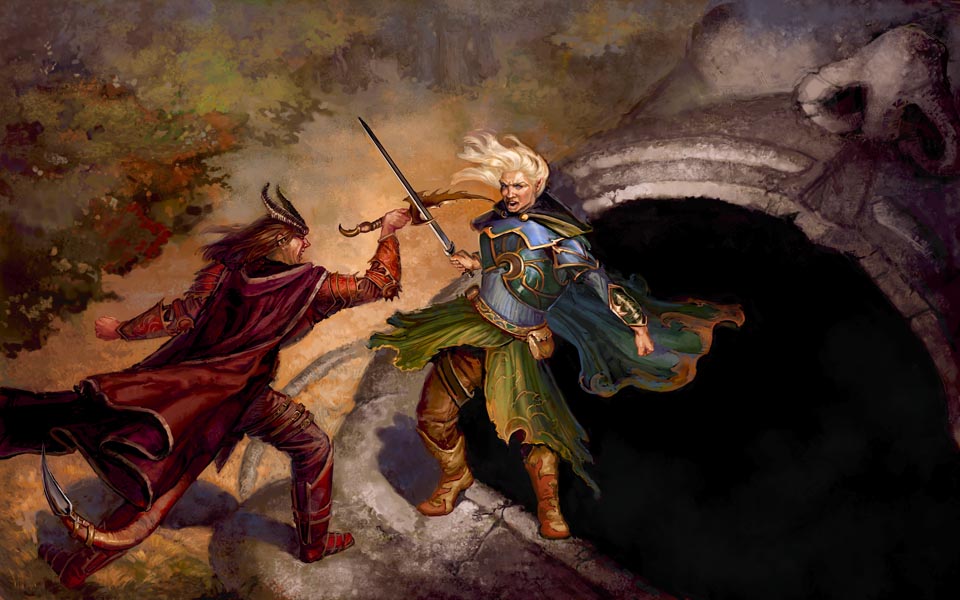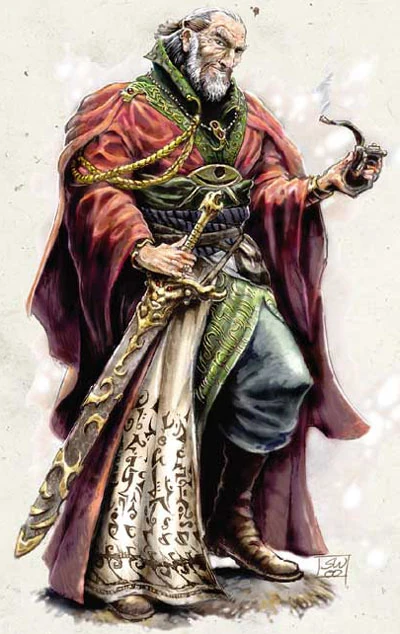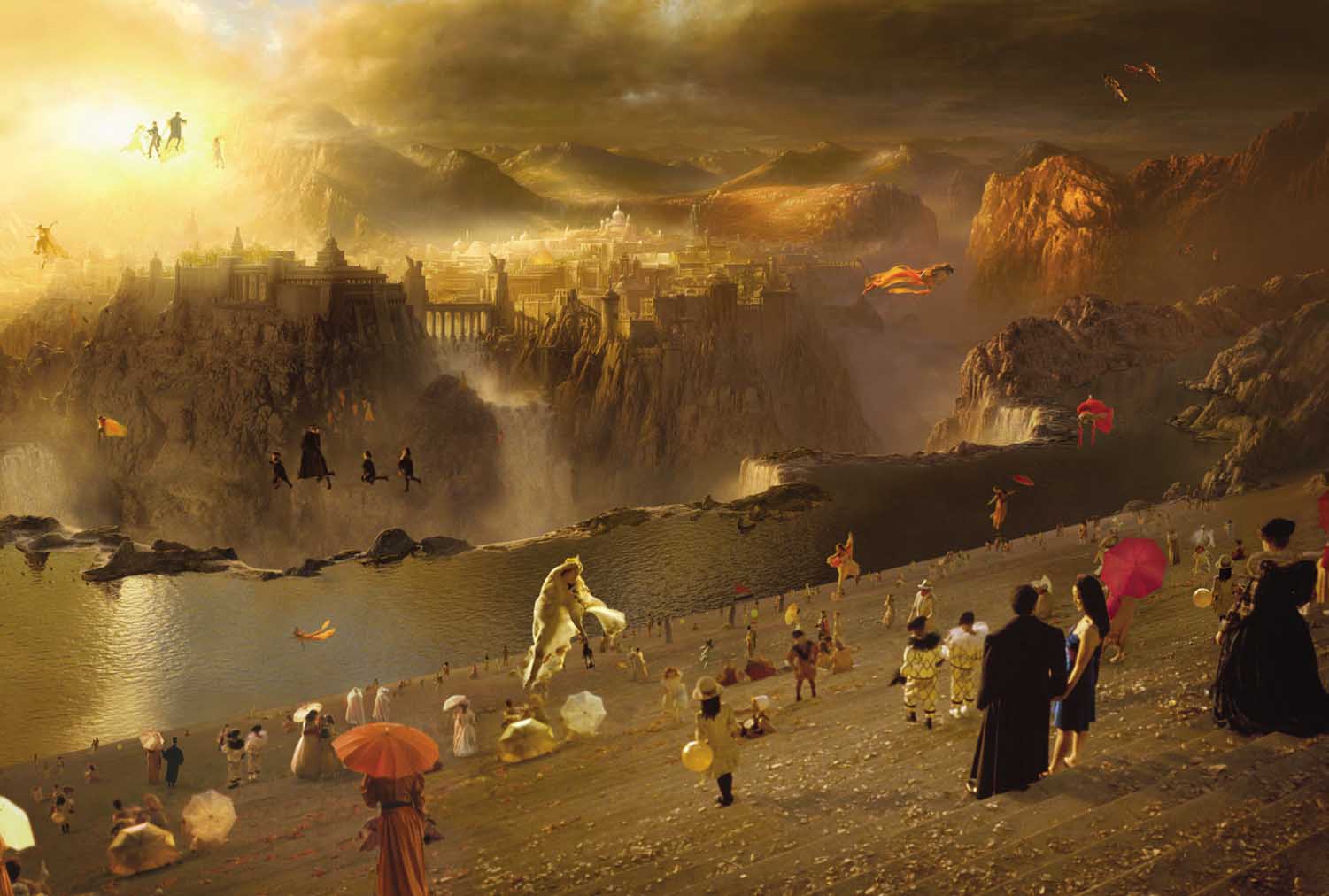A while ago, a buddy and I were bouncing ideas about a game taking place underwater. I was recently reminded by this in a post for the OSR Google+ community. This was something that's been explored before in Cerulean Seas, but otherwise
it's not really in a lot of role playing games. That's a real shame, because the ocean has some really cool stuff for all adventurers, whether they be land lubbers or ocean bound. However, there are a lot of differences on how things would work underwater, both in game and conceptually.
3D Everything
This is probably THE biggest effect on the game, especially if you use a battle map. In a normal surface game, 3D movement and area of effect abilities only come into effect with flying/levitating foes. It's there briefly so the game doesn't really get into exact rules for dealing with them extensively. What's worse is that in an underwater campaign, you'll have people below you as well as above you. For flying foes, I generally have a dice next to the flying miniature that denotes how high it is, but when you have to deal with characters that could be below you, this can get dicey (so sorry for that).
One suggestion I'd make is having two colors of dice to track this and use one character's or set piece's position as the base axis. So, when you set up the board for a fight, you have the boss as the base axis, and his allies and the players will be at positions relative to him. The drawback would be that you'd need a lot of dice for larger set pieces, especially the d10s if the area is big enough. Still I think for a battle mat encounter, this is probably the best way to handle it.
Of course, adventuring underwater isn't just like the land in complete 3D. There are a lot of other issues to contend with if the GM and players want to get into it. Area effect spells are simple enough. Each spell has the same vertical diameter as its horizontal diameter. I've make them cylindrical for simplicity sake, as measuring a 3D sphere is hard. In addition to movement is buoyancy. While many would look over this, I think this could add some interesting options in and outside of combat. I think for buoyancy, I'd make it something similar to, but a little simpler than Cerulean Seas' version.
Buoyancy
All races have a rating of buoyancy, probably between -3 and 3. A positive rating means that you naturally float, while a negative rating means you naturally sink. Most land dwelling creatures have a positive value. Those with a lot of fat have higher values while those with a lot of muscle have low values, and those with no fat have values in the negatives. If a character doesn't move, they float or sink a number of squares equal to their buoyancy (1 square = 5 feet).
This is considered free movement. However, they can only float straight up or straight down. Guiding your floating or sinking is essentially moving and adds your buoyancy rating to your movement when moving up or down. For land lubbers requires a Swimming check. Creatures that live underwater simply move up to their movement speed. So if your movement is standard 30 ft and you have a buoyancy rating of 3, then you can move a total of 45 feet, 15 feet of it going up. If you are going down, you have to fight buoyancy by making a Swimming check, land lubber or not. Failure means that you subtract your buoyancy rating from your movement speed. So in the example above, you'd only go 15 feet going down. This means that everyone pretty much moves faster going in the direction of your buoyancy and slower against it. Not too complicated, especially if you simplify the movement into squares or hexes. If you are going up and down in a single movement, I'd adjudicate the down first. If you are going double your movement or more downward, you only need to make one check. This is all reverse for those with negative buoyancy values of course.
For an added level of usefulness, buoyancy also affects knock back differently depending on the direction and buoyancy. Those prone to floating will get knocked back more if slammed upward, and those prone to sinking are resistant to knock backs if done downward.
Of course, there should be ways to change buoyancy, with air bladders, magic, or a pile of rocks. And being encumbered will lower your buoyancy rating per load. Light load has no affect, medium is a -1, heavy is a -2, and over is -4. For Savage Worlds, I'd have it as a -1 for the first load limit, -2 for the second- and -4 for the third. More than that would continue to double the penalty, since underwater you can have more stuff on you.
Currents
Then there are currents. Underwater rivers and eddies that can act as obstacles, terrain, and assistants in here. These can really make tactical fighting underwater interesting. Each current has a rating called Flow. This number adds movement squares to your movement if you go with the flow, or subtracts it when going against the flow. Buoyancy ratings can help or hinder, especially if the flow is going up or down vertically. The Flow only affects the movement as a whole, so even if you do double movement or more, it still only adds the Flow rating once. If you are going against the Flow and its rating is higher than your movement, you have to succeed on a Swimming check to not get swept away by it. A raise on your check (for D&D, +5 above the DC for swimming in rough water) lets you swim up to half of your speed plus or minus buoyancy, depending on vertical direction. A second raise lets you move your full movement. So someone that naturally sinks will have a very hard time swimming against the flow of a current going downward.
Currents also include things like whirlpools, which can trap you in them if you can't beat their Flow rating. You must pass a Swimming check to not get trapped or to escape. Failure means you are stuck and disoriented. In D&D, this could be dazed, while in Savage Worlds, this is simply shaken. Eddies are small whirlpools while maelstroms are massive whirlpools.
Pressure
This is where things get a little weird and I'll have to consolidate other sources. I like Pathfinder's rules for it, so I think that's a good idea. 1d6 damage per 100 feet below the surface, DC 15 Fortitude saves, +1 per previous check every minute for those not acclimated to the water. Same with Savage Worlds, but make that a Vigor check. However, if we are running a campaign of ocean dwellers, things will be a little different. Oceans have five different zones, so creatures of one zone are pretty used to the pressures of its zone and the zones above them. So for ocean dwellers, they take no damage until they get to a zone below the layers they are used to. These zones get really deep, so 1d6 per 100 feet starts to get really nasty when going to the deeper zones. So denizens of the deep have an advantage because they can survive in all of the zones above them.
Of course, there are dangers to surfacing too quickly. There's the Bends which makes it hurt when you ascend too quickly. if you swim more than 100 feet per minute, you take 1d4 Con damage per each additional 100 feet. For Savage Worlds, I'd say 2d6 damage per additional 100 feet is plenty.
Light
The deeper you go, the darker it gets. This is pretty simple I think and you use dimmer and dimmer light settings when in deeper zones, like the Twilight Zone and the Midnight Zone. This will use D&D/SW standard rules for dim and darkness.
Surface Weapons and Spells
Piercing weapons would be fine underwater. Thrown weapons don't really work unless they are hydrodynamic, like a trident or harpoon. Bladed weapons get a -2 to attack unless they are made to work underwater. Bludgeoning weapons take a -2 and can't really be made to work underwater. Ranged weapons have half their range underwater. Spells are really up to the GM and their world consistency. Does a fireball work because Magic! or not because fire? Lightning spells dissipate? Ice and sonic spells get more powerful? That's something more in the realm of the GM adjudication.
This covers everything I could realistically think of to deal with underwater adventuring. For a simpler game, a GM could ignore these and run as is, and much of this wouldn't be a problem if you aren't using a game mat. However, I think these rules can add a different and fun layer of complexity that can really enhance the underwater experience and make it feel different, memorable, and fun.





